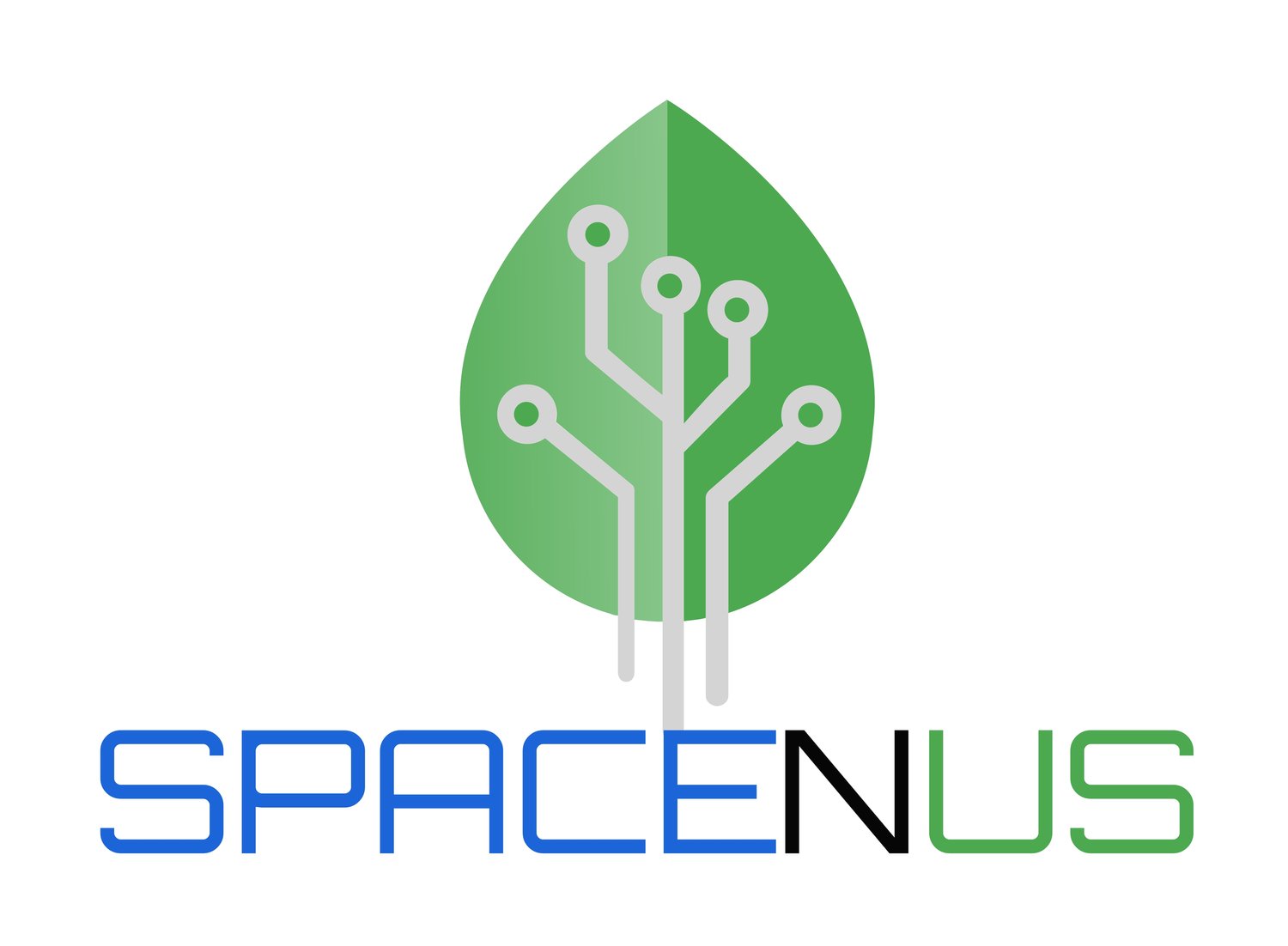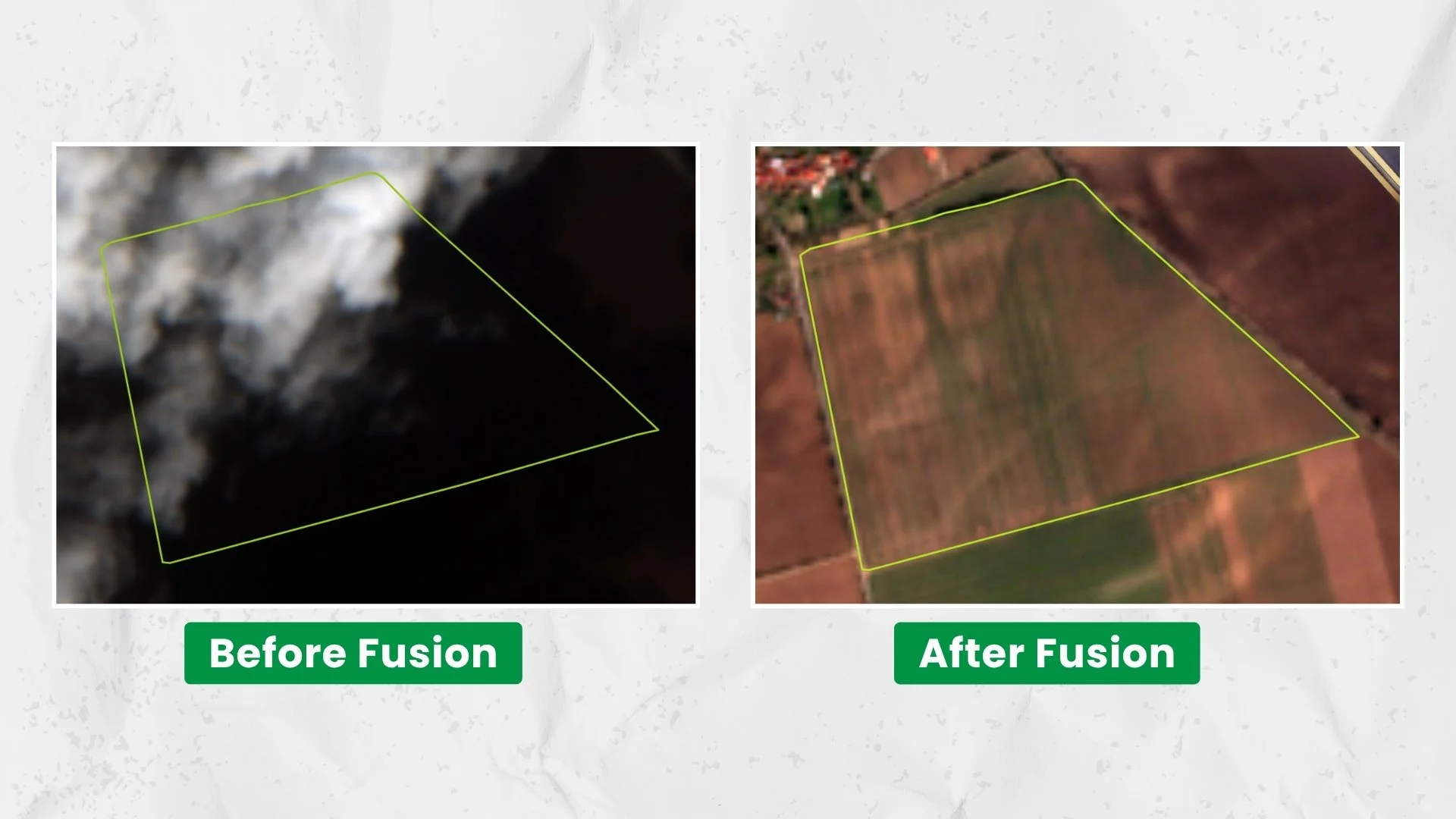Cloud Cover Problem? Fusion Solutions for Reliable Farm Data and Fertilizer Recommendations
Cloud cover is one of the biggest challenges facing precision agriculture today. For farmers who rely on satellite data to monitor crops and make fertilizer decisions, clouds can block important information, leading to data gaps and less accurate recommendations. But thanks to innovative data fusion technology, this cloud problem is being solved – enabling reliable, continuous farm monitoring and smart fertilizer use.
In this blog, we’ll explore how cloud cover affects farm data, why it matters for fertilizer recommendations, and how data fusion solutions are transforming precision agriculture.
Why cloud cover is a problem for precision agriculture
Satellite imagery is a key tool in precision agriculture, helping farmers track crop health, soil moisture, and nutrient needs. However, optical satellites, which capture visible and infrared light, cannot see through clouds. This means:
Up to 60% of satellite imagery can be obscured by clouds, especially in areas with frequent rainfall or fog.
Important growth stages can be missed, as yields can change significantly within a week.
Missing data leads to less accurate fertilizer recommendations, with the risk of over- or under-application.
This not only affects production but also increases environmental risks such as nitrate leaching and greenhouse gas emissions.
Farmers need consistent, reliable information throughout the growing season to optimize fertilizer use, reduce costs, and protect the environment.
How cloud cover affects fertilizer recommendations
Fertilizer application is a balancing act. Overapplication wastes money and harms the environment, while too little limits crop growth. Precision farming uses satellite data to generate fertilizer rates based on real-time crop needs.
But when clouds block satellite views:
Farmers lose timely insights into crop nitrogen uptake and biomass growth.
Decisions must rely on outdated or incomplete data, which reduces accuracy.
This can lead to overuse of fertilizer, contribute to pollution, and violate regulations.
Conversely, underapplication of fertilizer can reduce yields and farm income.
Reliable fertilizer recommendations require continuous, cloud-free monitoring of crop conditions.
Fusion Solutions: Combining Data for Cloud-Free Insights
To overcome the cloud problem, agri-tech innovators are using data fusion—combining multiple satellite data sources—to create a complete, cloud-free picture of crops.
What is Data Fusion?
Optical satellite data (e.g., Sentinel-2) that provides detailed crop images but is blocked by clouds.
Synthetic Aperture Radar (SAR) data (e.g., Sentinel-1) that uses microwaves to capture images through clouds regardless of weather.
By combining these datasets with AI algorithms, Data Fusion creates weekly, cloud-free maps of crop biomass, nitrogen uptake, and soil moisture.
Why Data Fusion Works
Reduces data gaps caused by clouds, ensuring farmers receive continuous updates .
Improves accuracy by combining complementary data types.
Enables precise fertilizer recommendations even during extended cloudiness.
Supports environmental goals by optimizing input use and reducing emissions.
Fusion Project: A Real-World Success Story
At Spacenus, we have developed the Fusion Project to address the cloud problem. Key achievements include:
Combining Sentinel-1 SAR and Sentinel-2 optical data with AI to provide reliable, weekly fertilizer recommendations.
Helping farmers reduce nitrogen fertilizer use by up to 30%, in line with the European Green Deal targets.
Protecting groundwater from nitrate pollution and reducing greenhouse gas emissions.
Covering large areas (planned 1.5 million hectares) with scalable, cost-effective solutions.
Providing farmers with easy-to-use tools via the ANA web app to make data-driven decisions.
This project demonstrates that cloud cover no longer needs to limit the potential of precision agriculture.
Cloud Coverage Insights: How Real-Time Data Helps Farmers
Beyond fusion, real-time cloud coverage data itself is a powerful tool. Platforms like Farmonaut provide:
Live cloud maps and forecasts to inform daily farm operations.
Integration of cloud data with soil moisture, weather, and crop health for intelligent irrigation and pest management.
Historical cloud trend analysis to guide crop selection and long-term planning.
By understanding cloud patterns, farmers can better plan fertilizer application timing and other interventions.
Why Cloud-Free Data Matters for Sustainable Farming
Precision fertilizer use enabled by cloud-free data supports:
Increase crop production and increase agricultural profitability through optimized inputs.
Protect the environment by reducing nutrient runoff and emissions.
Comply with necessary regulations to reduce fertilizer use.
Generate carbon credits by improving regenerative agriculture monitoring (linked to the larger mission of SpaceNation).
Ultimately, overcoming the cloud problem helps farmers grow more food sustainably while protecting the planet.
Conclusion
Cloud cover has long been a barrier to reliable satellite data in agriculture, limiting fertilizer recommendations and agricultural decision-making. But with Spacenus’ innovative data fusion technology, farmers can now access continuous, accurate, and cloud-free data throughout the growing season.
This advancement empowers intelligent fertilizer use, increases yields, reduces environmental impact, and supports climate-friendly farming practices. The future of precision agriculture is bright – even when the skies aren’t clear.
Want to learn more about how Spacenus is solving the cloud problem?
Read about our Fusion project and fertilizer recommendation progress here: Overcoming Cloud Cover: The Fusion Project's Solution for Fertiliser Recommendations


